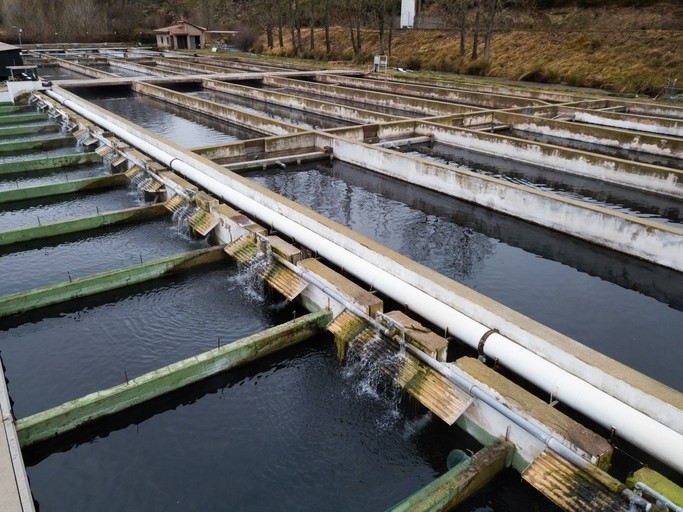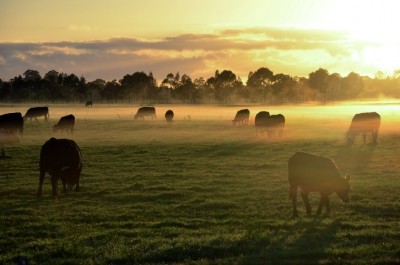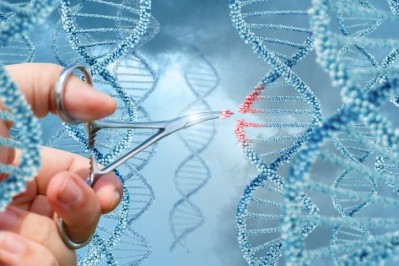Nutritional programming may support farmed perch growth, fishmeal replacement

A team of researchers from Ohio State University examined implementing nutritional programming with yellow perch as a way to improve the use of a soybean meal-based diet (SBM) in place of fishmeal (FM) and to support growth performance. The group members published their work in the journal Aquaculture.
“The hypotheses of this study were that yellow perch juveniles could be nutritionally programmed by being fed SBM-based diets as their first formulated feed, and that their early nutritional history would result in improved growth performance when fish were reintroduced to SBM-based diets later in life,” the researchers said. “It is also assumed that these nutritionally programmed fish could be transitioned back to FM-based diets during gametogenesis with no negative reproductive implications from the SBM diets, and fecundity, egg quality or fertilization rate.”
The researchers found that fish did respond to the nutritional programming, which could allow for increased replacement of fishmeal with a plant-based protein. “These fish, when fed a diet with 75% SBM replacement for FM protein as their first feed, and then re-introduced to the same diet 9 months later, had numerically higher growth than fish fed other diets initially,” they said.
“It was also shown that reproductive function and egg quality are not affected in fish that were previously fed an SBM diet, if transitioned to an FM diet during gametogenesis,” they said. “Future studies are being conducted to determine if nutritional programming of broodstock fish will pass on the programming changes to their progeny, allowing them to be even further adapted to utilize SBM diets.”
Why dietary programming?
Yellow perch is an aquaculture research priority in the US as demand exceeds supply of the fish, the researchers said. However, intensive aquaculture production has been challenging and expensive as diets during the larval stage and in later development call for high levels of fishmeal (FM).
The amount of FM used increases feed costs and is considered unsustainable, they said. Replacing fishmeal with plant proteins has been explored, however, only 30-50% of FM can be exchanged before feed efficiency and growth are reduced in several species including Atlantic cod, rainbow trout, Atlantic salmon and yellow perch.
Soybean meal (SBM) is considered one of the more promising fishmeal replacements as it is lower in cost than fishmeal but contains a high protein content and a balanced amino acid profile, they said. But, the ingredient also has anti-nutritional factors, which are expensive to remove.
“SBM contains phytoestrogens and anti-nutritional factors that include trypsin inhibitors, lectins, saponins, phytic acid, oligosaccharides,” the researchers said. “They have been shown to have many negative consequences on fish growth, reproduction and overall health with the most notable effect being intestinal enteritis.”
Yellow perch are sensitive to the anti-nutritional factors and display reduced performance and growth, they said. In one such study, yellow perch juveniles were given an SBM diet for 8 weeks and there was an inversely proportional interaction for weight gain and amount of SBM in the feed.
“The present study focused on adapting the fish to SBM-based diets rather than trying to alter the diets to the fish,” they said. “This study was designed to test the hypothesis, that nutritional programming during early life exposure of yellow perch to plant-based diets can be expected to improve growth when fish are reintroduced to the same plant-based diet later as adults.”
The idea was previously examined using rainbow trout, they added.
Nutritional programming uses early diets fed during a period of critical development to induce changes later in life, the researchers said. The underlying mechanism is thought to epigenetic modification.
“These result in functional changes to the genome but do not involve a change in the nucleotide sequence,” they said. “Such changes are brought about through DNA methylation and histone modification, each of which alters how genes are regulated without altering the underlying DNA sequence.”
The process has been used for several years in mammals, but is less well explored for aquaculture production, they said. Previous studies have explored the use of plant-based feeds, carbohydrates and lipids, but few have looked at the mechanisms involved.
Methods and materials
In the feed training trial, juvenile yellow perch were given one of four diets for a period of two months, the researchers said. These included a fishmeal-based control, a diet with wheat gluten meal (WG), or two different soybean meal diets (SBM-A or SBM-B) where vegetable-based proteins were swapped for 75% of the fishmeal protein in the diets
In the second and third phases of the trial, all fish received an FM-based diet for a 9-month period, followed by the SBM-A diet for 7 months, they said. In the fourth stage, fish were returned to an FM diet for 6 months and eggs generated were collected to check for total number of eggs produced, mean egg weight, fecundity, fertilization rate and gonad somatic index (GSI).
Fish weights and survival were also noted at the start and end of each phase, they said. Growth performance and specific growth rate (SGR) were calculated.
Results
Overall, it was found that fish initially started on the SBM-A diet tended to outperform those from the other groups when returned to the SBM diet, the researchers said. However, female reproductive quality was not altered by diet.
“Groups that had initially been fed the SBM-A diet in phase 1 showed a numerically higher weight gain % than the other groups when re-introduced to the diet in phase 3,” they said. “Even though there were no significant differences between groups in final weight, mean weight gain and SGR, the trend of the SBM-A group performing slightly better than the other groups was beginning to emerge.”
At the end of the first feeding period, survival rates were similar for fish on all diets, they said. However, fish weights were different as the feed conversion ratio was higher, and the SGR was lower for fish getting the SBM diets.
However, fish on the two SBM diets gained a larger percentage of weight in the second phase of the trial, they said. Fish were still lower than those on the FM or WG diets and SGR was similar among groups.
All groups of fish ended the third phases with similar weights, and SGR was highest during the trial, the researchers said. “While there was no significance among groups in term of weight gain percent, an encouraging fact was that SBM-A had a numerically higher weight gain percent than the other groups at 150 ± 31%; FM gained 114 ± 24%, WG (110 ± 26%) and SBM-B (118 ± 15%),” they added.
Reproductive performance demonstrated that use of the SBM diet did not alter gametogenesis, they said. Fish weights, fecundity results, GSI and egg size for each group were similar.
Source: Aquaculture
Title: Nutritional programming effects on growth and reproduction of broodstock and embryonic development of progeny in yellow perch (Perca flavescens) fed soybean meal-based diets
Authors: Megan Kemski, Macdonald Wick, Konrad Dabrowski
DOI: doi.org/10.1016/j.aquaculture.2018.07.001












